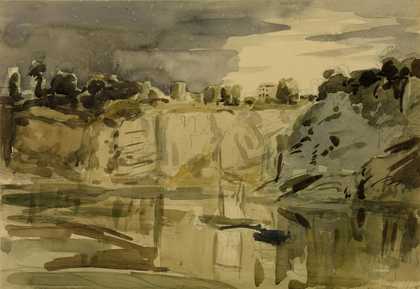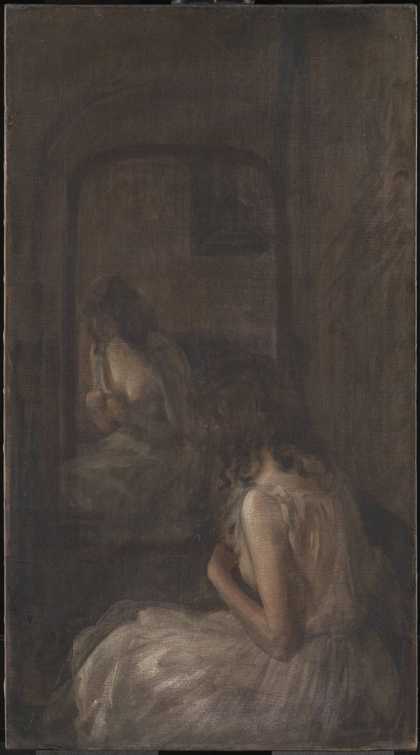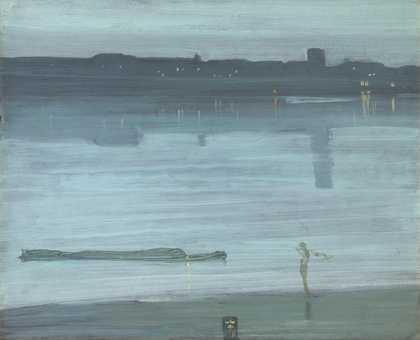
Philip Wilson Steer
Chepstow (1905)
Tate
From his very early youth Steer had been a collector of shells, of minerals and crystals and of coins. His interest in numismatics which was to last all his life, led him in his teens to think of entering the Coins and Medals department of the British Museum, but academic demands were too much for him and he turned to painting.
He worked at Gloucester School of Art under John Kemp and then, failing the entry to the RA Schools, left for Paris in 1882. His time was cut short by a rule introduced by the Beaux Arts which demanded a knowledge of French. He settled in London.
However scanty Steer’s contacts with French painting the fact remains that he was soon producing pictures of an extraordinary precocity. The Etaples pictures of the summer of 1887, although they owe a great deal to Whistler and through him to the Japanese, strike an entirely original note.
Within a few years Steer was experimenting with daring juxtapositions of colour and handling and even more striking formalisations. The summer of 1890 saw a series of direct studies in a singing Impressionist palette (Poole Harbour) and the climax of these seaside pictures came in 1894 with the Fitzwilliam Children Paddling.
About 1895 an abrupt change comes over Steer’s line of advance. A deliberately anachronistic quality enters his work. Up to now he had, to put it crudely, been painting modern pictures, even if they were charged with a retrospective mood; but now he begins to experiment with styles drawn from the past. He turns from the fresh astringent light of the seaside to the gold and shadow of wooded landscape.
With these pictures his art reaches a unique pitch; they are among the few landscapes of this century in which the painter’s intensity of vision gives an almost tragic value to the subject. Steer’s inspiration was visual; unlike Sickert’s it was not based on drawing, a consciousness of shape, but upon a consciousness of the moods and movements of light.


